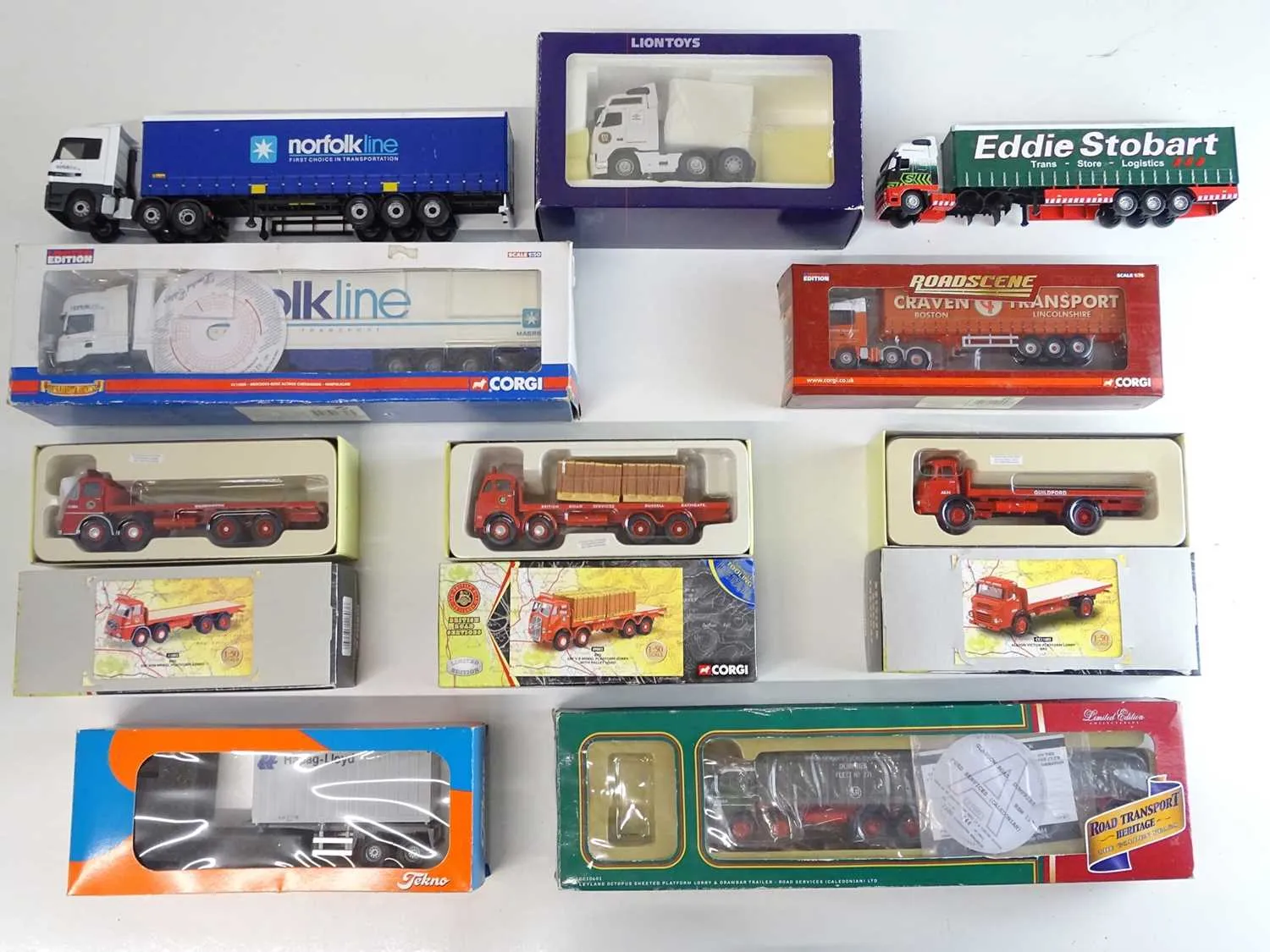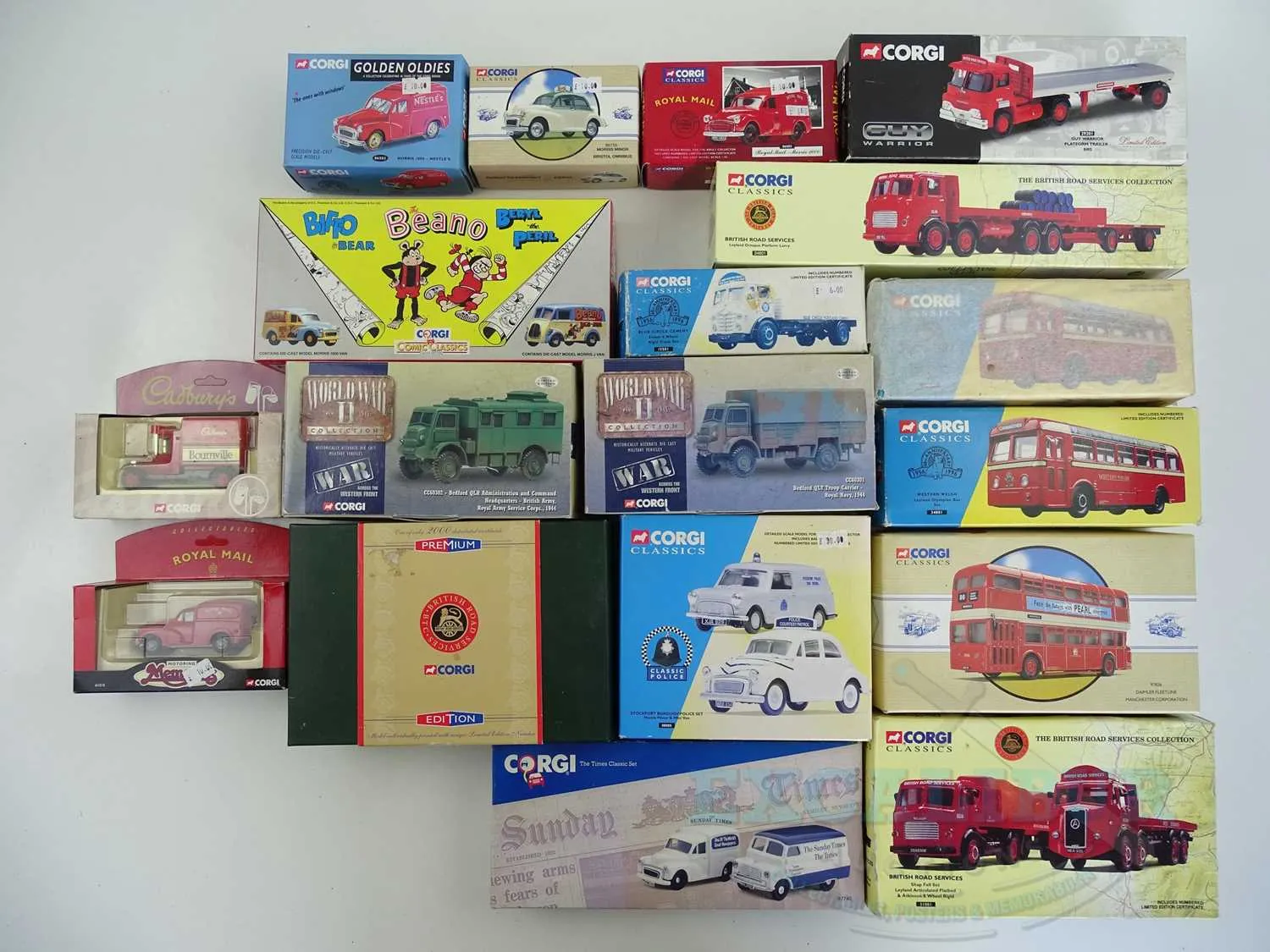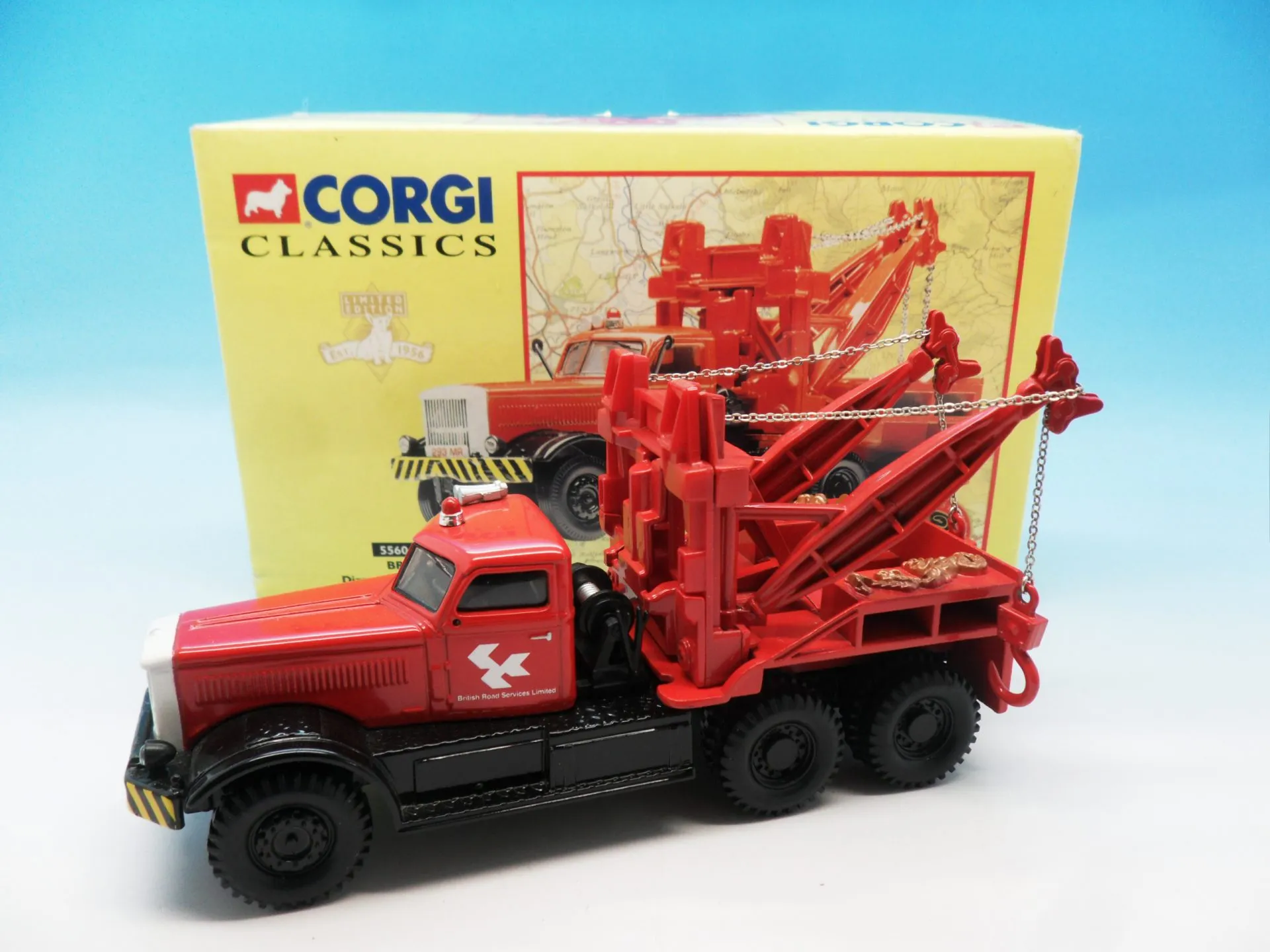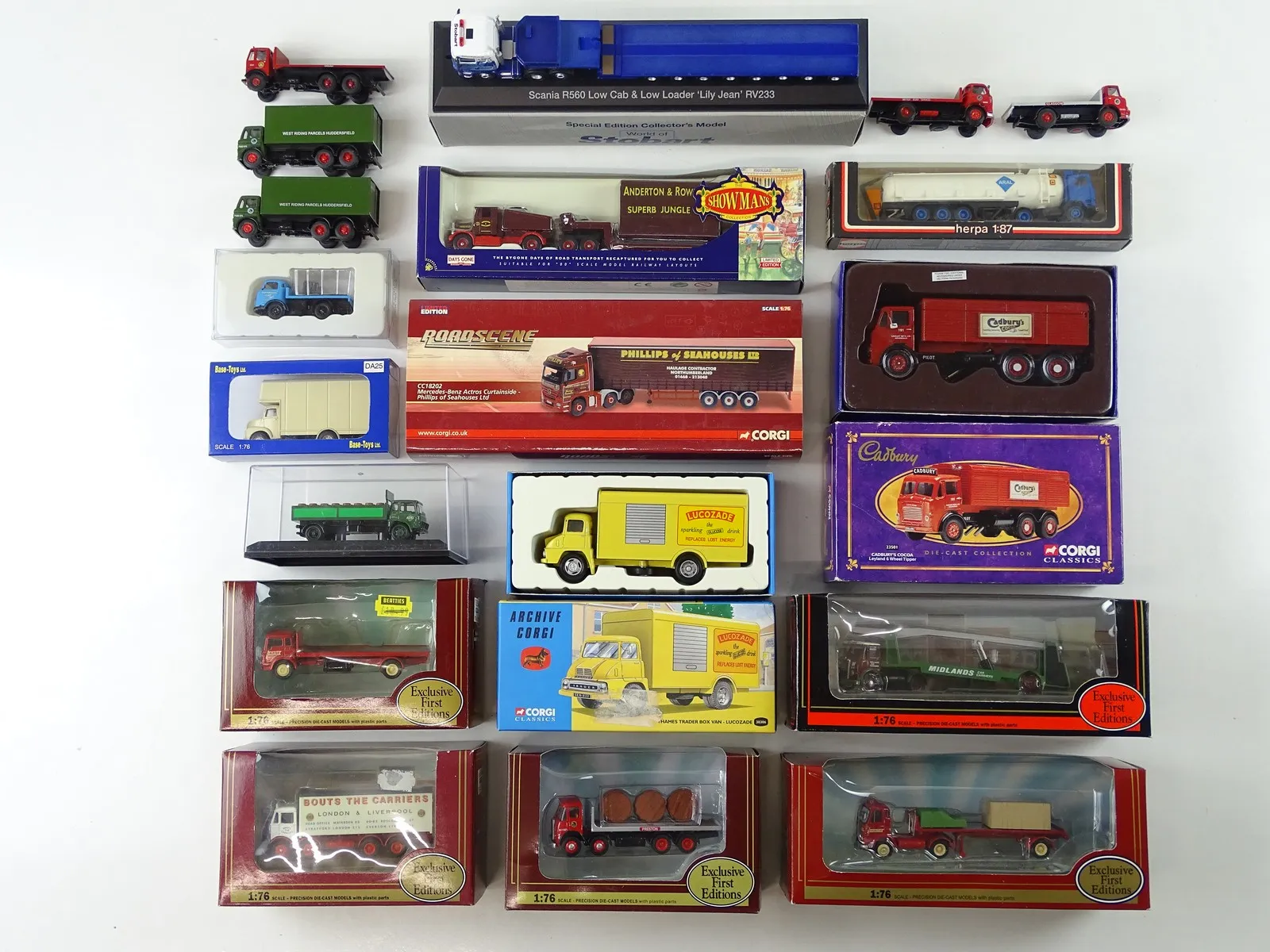What Are Diecast Lorries
Diecast lorries are miniature replicas of real-life heavy goods vehicles, meticulously crafted from metal alloys. These models are not just toys; they’re prized collectibles, display pieces, and, for some, valuable investments. The term “diecast” refers to the manufacturing process where molten metal is injected into molds, creating highly detailed and accurate representations. Diecast lorries capture the essence of their full-sized counterparts, from the overall shape and design to the intricate details like lights, mirrors, and even the markings on the tires. This level of detail is what sets them apart from other types of models, making them highly sought after by enthusiasts around the globe. The appeal of these miniature trucks lies in their ability to evoke nostalgia, celebrate engineering, and offer a tangible connection to the world of transportation.
Scale and Detail
One of the primary features that enthusiasts appreciate in diecast lorries is the scale and level of detail. Common scales include 1:43, 1:50, and 1:87, with each scale offering a different perspective on the real-world vehicle. The smaller the scale, the more compact the model, but even at these sizes, the detail is often remarkable. Manufacturers pay close attention to the proportions, ensuring that the model accurately reflects the dimensions of the original lorry. This includes the length, width, and height, as well as the positioning of various components like the cab, trailer, and wheels. Beyond the overall shape, the detail extends to the smallest elements, such as the rivets, door handles, and even the texture of the tires. Some models even feature detailed interiors, with seats, dashboards, and steering wheels accurately replicated. The quality of the detail is a key factor in determining the value and desirability of a diecast lorry.
Materials and Construction

The materials and construction of diecast lorries are critical to their durability and overall quality. The primary material used is usually a zinc alloy, which is strong and allows for intricate detailing. This alloy is known for its ability to capture fine lines and shapes, which is essential for accurately replicating the complex features of a lorry. In addition to the metal body, diecast lorries often incorporate plastic or rubber components for parts like the wheels, tires, and interior details. The combination of materials provides a balance of strength, flexibility, and realism. The construction process involves multiple stages, from die-casting the metal components to assembling the various parts. Quality control is a significant aspect of the manufacturing process, with manufacturers inspecting each model to ensure that it meets their standards for detail and accuracy. The use of high-quality materials and meticulous construction contribute to the longevity and collectibility of diecast lorries, making them a worthwhile investment for enthusiasts.
Durability and Longevity
Diecast lorries are known for their durability and longevity. The robust metal construction and quality materials enable them to withstand years of handling and display. Unlike plastic models that can be easily damaged or broken, diecast lorries are designed to endure wear and tear, making them suitable for both collectors and children. The metal alloy used in the construction is resistant to corrosion and wear, ensuring that the models maintain their appearance over time. Proper care, such as avoiding direct sunlight and extreme temperatures, can further extend their lifespan. Many collectors have diecast lorries that have been in their collections for decades, demonstrating their lasting quality. The durable nature of these models makes them a worthwhile investment for those who appreciate detailed craftsmanship and enjoy displaying their collections without worrying about their longevity. This durability is one of the key features that enthusiasts love, allowing them to enjoy these models for years to come.
Variety of Models
Diecast lorries come in a wide variety of models, catering to the diverse interests of collectors. Manufacturers produce models based on different types of lorries, including articulated trucks, flatbeds, tankers, and specialized transport vehicles. Each type has its unique features and design elements, adding to the appeal and collectibility of the models. The variety of models extends beyond the type of lorry to include various brands, paint schemes, and historical periods. Collectors can choose from classic models, modern designs, or limited edition releases, each offering a unique perspective on the world of trucking. This extensive variety ensures that there is something for every collector, whether they are interested in a specific brand, a particular era, or a specific type of load carrier. The continuous addition of new models keeps the hobby fresh and exciting, with collectors always eager to add the latest releases to their collections. The range of options makes diecast lorries a versatile hobby that allows individuals to focus on their specific interests and preferences.
Classic vs Modern Lorries

The world of diecast lorries provides a fascinating contrast between classic and modern designs, appealing to collectors with different tastes. Classic lorries represent the early days of trucking, often featuring simpler designs, vintage paint schemes, and historical significance. These models evoke a sense of nostalgia and are highly sought after by collectors interested in the history of transportation. In contrast, modern lorries showcase contemporary designs, advanced technologies, and sleek aesthetics. These models feature realistic details, such as aerodynamic cabs, modern trailers, and detailed interiors that reflect current trends in the trucking industry. Collectors often choose to specialize in one type of lorry or collect a mix of both classic and modern models. The difference between classic and modern models extends beyond appearance, with each reflecting different eras, engineering advancements, and cultural influences. This diversity allows collectors to curate a collection that tells a story of the evolution of the trucking industry, from its humble beginnings to its current state. Both classic and modern lorries offer unique appeal, allowing collectors to explore their interests and appreciate the evolution of design and technology over time.
Specific Brands and Manufacturers
Various brands and manufacturers produce diecast lorries, each with its unique style, quality, and target audience. Some of the most well-known brands include industry leaders known for their attention to detail, historical accuracy, and wide range of models. These brands often release limited edition models and collaborate with real-world trucking companies to create authentic replicas. Certain manufacturers focus on specific regions or historical periods, providing collectors with specialized options. When choosing diecast lorries, collectors often consider the brand reputation, the quality of the materials used, and the level of detail in the models. Some collectors prefer to collect models from a specific brand, while others diversify their collections to include a variety of manufacturers. The availability of different brands gives collectors the freedom to explore the world of diecast lorries based on their interests and preferences. The specific brands and manufacturers that collectors choose play a significant role in determining the value and desirability of their collections, as some brands are more highly regarded than others due to their quality, accuracy, and rarity.
Authenticity and Realism
Authenticity and realism are essential features of diecast lorries, with manufacturers striving to create models that accurately reflect their real-world counterparts. This attention to detail extends beyond the overall shape and design to include the intricate features that define the lorries. The level of realism in diecast lorries contributes to their value and appeal, making them highly sought after by collectors who appreciate precision and accuracy. The authenticity is achieved by licensing agreements with trucking companies and using detailed reference materials. This can include blueprints, photographs, and specifications to ensure that the models are true to life. The realism extends to the paint schemes, with models often featuring authentic colors, logos, and markings. Some models even include realistic weathering effects, such as rust and dirt, which adds to their authenticity. The attention to authenticity and realism is a hallmark of high-quality diecast lorries, making them prized collectibles for enthusiasts.
Paint and Finish

The paint and finish of a diecast lorry significantly impact its appearance and collectibility. Manufacturers employ advanced painting techniques to achieve realistic colors and finishes, making the models visually appealing. The quality of the paint job is a critical factor in determining the overall look and feel of the model. The paint should be applied evenly, with no imperfections or blemishes. Glossy finishes provide a sleek, modern look, while matte finishes offer a more rugged, vintage appearance. The paint colors should accurately reflect the colors used on the original lorries, ensuring that the models are authentic. Some manufacturers use multiple layers of paint, which can add depth and dimension to the model. The finish is often protected with a clear coat, which adds a layer of protection and enhances the paint’s durability. The quality of the paint and finish is a key indicator of the overall quality of the model, with collectors valuing models that have a flawless, realistic appearance. The paint and finish are what bring these miniatures to life, making them stand out and appealing to collectors.
Decals and Markings
Decals and markings play a crucial role in the authenticity and realism of diecast lorries. These elements, which include logos, company names, warning labels, and other details, add an extra layer of accuracy to the models. The quality of the decals and markings, including their placement, size, and clarity, contributes to the overall appearance of the lorry. High-quality decals and markings are crisp, clean, and free of errors. They should be applied carefully to prevent any peeling or damage. Some manufacturers use advanced techniques, such as pad printing or tampo printing, to apply the markings with precision. The accurate placement of decals and markings is also important; they should be positioned in the same locations as on the real-world lorries. The use of realistic fonts and colors further enhances the authenticity. Collectors often pay close attention to the decals and markings, as they provide crucial information about the brand, the operator, and the specific type of lorry. These small details can significantly enhance the value and desirability of a diecast lorry.
Functionality and Features
Diecast lorries often incorporate various functional features, adding to their appeal and playability. These features enhance the realism and allow collectors to interact with the models in a meaningful way. The functionality of these models is a great selling point for collectors and makes them enjoyable to own. The models are not just static display pieces; they offer a level of engagement and enjoyment that sets them apart from other collectibles. The level of functionality varies depending on the model, but even basic features, such as movable wheels and steering, add to the appeal. Some of the more advanced features make these models extra special. These features can significantly increase the value and desirability of the diecast lorry.
Opening Parts

Opening parts are a key feature of many diecast lorries, allowing collectors to explore the details inside. The most common opening parts include doors, hoods, and sometimes even the cab of the lorry. Opening the doors allows collectors to see the interior of the cab. Opening the hood reveals a detailed engine compartment, with engine components, wiring, and other features accurately replicated. These opening parts are typically made with hinges or other mechanisms to allow for smooth and realistic movement. The quality of the opening parts is also important, with collectors valuing models that have well-engineered doors, hoods, and other features that open and close easily. The presence of opening parts increases the realism and playability of the model. These opening parts provide a greater level of detail and make the models more appealing. The presence of these features can significantly increase the value and desirability of a diecast lorry.
Working Components
Many high-end diecast lorries feature working components, which add another layer of realism and functionality. These components may include working suspension, steerable wheels, and even functional lights and sounds. Working suspension allows the model to mimic the movement of a real lorry over uneven surfaces. Steerable wheels can be controlled through a steering wheel or lever. Some models incorporate small batteries to power lights and sounds, such as headlights, taillights, and engine noises. The presence of working components significantly increases the realism and appeal of the model, making it more enjoyable for collectors. The level of functionality can vary, but even basic features can enhance the overall experience. Working components also make the models more valuable and sought after. The addition of these features demonstrates the manufacturer’s commitment to detail and realism.
Collectibility and Value
Diecast lorries are highly collectible items, with their value determined by several factors, including rarity, condition, and historical significance. The value of a diecast lorry can range from a few dollars to hundreds or even thousands, depending on the specific model. Rare and limited edition models are often the most valuable, as their limited production runs make them highly sought after by collectors. The condition of the model is also a significant factor, with models in pristine condition being worth more than those that have been damaged or worn. Historical significance plays a role, with models that represent important eras or events in trucking history often fetching higher prices. Collectors often focus on specific brands, eras, or model types, leading to the formation of specialized collections. The investment potential of diecast lorries is also a consideration for many collectors, as the value of certain models can increase over time. The collectibility and value of diecast lorries make them a rewarding hobby for enthusiasts who appreciate the craftsmanship, detail, and history of these miniature vehicles. These factors determine the appeal and worth of the models.
Rarity and Limited Editions

Rarity and limited editions are key factors that drive the collectibility and value of diecast lorries. Limited edition models are produced in small quantities, making them highly sought after by collectors. These models often feature unique paint schemes, special markings, or exclusive details. Rarity is often determined by the number of models produced and the length of time they were available for sale. The more rare a model, the higher its value. Limited edition models are frequently released to commemorate specific events, anniversaries, or partnerships with trucking companies. These special releases are often highly coveted by collectors, who view them as valuable additions to their collections. The value of rare and limited edition models can increase significantly over time, making them a worthwhile investment for enthusiasts. Collectors often actively seek out these models, participating in auctions and trading networks to acquire them. The rarity of the model makes it a desirable addition for collectors.
Maintaining and Displaying
Proper maintenance and display techniques are essential for preserving the value and appearance of diecast lorries. Dust and dirt can accumulate on the models over time, so regular cleaning is recommended. Use a soft cloth or brush to gently remove any dust or debris. Avoid using harsh chemicals or abrasive cleaners, as these can damage the paint or decals. Proper storage is also important, as exposure to direct sunlight, extreme temperatures, or humidity can cause damage. Display your diecast lorries in a cabinet or display case to protect them from dust and damage. Consider using a protective case or cover to further safeguard your models. Regular inspection can help identify any potential issues, such as loose parts or fading paint. By following these maintenance and display tips, you can ensure that your diecast lorries remain in pristine condition for years to come. Careful handling and storage are essential for ensuring your collection stays in good condition.
Where to Buy
Diecast lorries are available for purchase through various channels, providing collectors with multiple options to find the models they desire. Online retailers offer a vast selection of diecast lorries, including models from various brands, scales, and eras. Online marketplaces such as eBay and specialized online stores provide a wide range of options. These retailers provide convenience and access to a global market. Specialty shops and dealers cater to collectors. These shops provide specialized models and expert advice, creating a community for enthusiasts. Local and regional trade shows and events also provide opportunities to purchase and trade diecast lorries. When buying diecast lorries, always consider the reputation of the seller, the condition of the model, and the price. By exploring the available options, you can find the perfect diecast lorries to add to your collection. The choice of where to buy often depends on personal preference.
Online Retailers

Online retailers offer a convenient and extensive way to purchase diecast lorries. Major online marketplaces and specialized diecast stores provide a wide range of models from different brands, scales, and eras. The selection available is generally broader than what can be found in physical stores. You can easily compare prices, read reviews, and assess the condition of the model before making a purchase. Online retailers provide detailed product descriptions and images, making it easier to evaluate the models. Many online retailers offer secure payment options and reliable shipping services, ensuring a smooth and safe purchasing experience. However, it is essential to check the reputation of the online retailer and to read reviews to ensure that you are buying from a trusted source. Online retailers are a convenient way to find the perfect models.
Specialty Shops and Dealers
Specialty shops and dealers offer a more personalized experience for collectors of diecast lorries. These shops typically focus on a curated selection of models, with a focus on quality, rarity, and expertise. Staff members often have in-depth knowledge of diecast lorries, providing valuable advice and assistance to collectors. Specialty shops often carry rare or limited-edition models that are not available through mass-market retailers. They also offer a place to connect with other collectors, fostering a sense of community. Dealers often attend trade shows and events, where they showcase their collections and offer models for sale. Visiting specialty shops and dealers can be a rewarding experience for collectors who appreciate a personal touch and the opportunity to discuss their passion with other enthusiasts. These shops provide a unique place to explore, find new models, and connect with fellow collectors.
